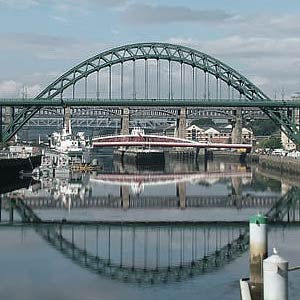The Romans built a bridge across the Tyne River. A small fort called Pons Aelius was built to guard this bridge. Robert Curthose, the eldest son of William the Conqueror built a castle in the area after his raid of Scotland. The history of Newcastle traces its name to this castle, which was known as Robert's 'new castle'. This castle was originally made of wood and was later replaced with one built of stone.
A visitor to Newcastle upon Tyne can view what is left of it even today. A look at the history of Newcastle upon Tyne takes us back to its handsome cathedral and plethora of museums. Special mention must be made of Newcastle's 6 bridges - the Redheugh Bridge, King Edward VII Bridge, Queen Elizabeth II Bridge, The High Level Bridge, the Swing Bridge and the George V bridge. The history of Newcastle upon Tyne can be traced back to the Roman and Medieval times. It still bears remnants of its historic past in the form of its impressive Georgian and Victorian buildings. The fort of Segedunum is located at a strategic point.
Industrialization led to the city's rapid growth and development. Newcastle's importance was doubled due to its importance on account of its commercial industries as well as its proximity to the sea. With the development of industries such as rope making, shipbuilding and glass making, the county of Newcastle grew in prominence. The elegant Victorian streets and civic buildings of the city bear testimony to the city's former status and wealth. Unfortunately, Newcastle upon Tyne suffered considerably during the Great Depression in the 1930s. Many a factory closed down and unemployment was widespread. The city declined into poverty. After the Jarrow Crusade of 1936, when men marched in protest of lack of welfare, the city underwent development and took many years to gain its former status.













